Cultural Tourism
Sukuma Cultural Tourism
Sukuma, the largest tribe in Tanzania. More than 120 different ethnic groups are in Tanzania and closely 15% of the population in Tanzania are from the Sukuma Tribe. Apart from Mwanza, Wasukuma of Sukuma tribe are also at the neighbouring regions Shinyanga, Simiyu, Geita, Tabora and a small part of Mara.
Sukuma Dancing and History at Bujora Museum
Bujora Museum is the Sukuma cultural Museum at Kisesa, 13 kilometres from Mwanza city centre. Learn about the Sukuma Culture History, Kinship leadership, Iron technology, traditional houses and the traditional dance of the Sukuma.
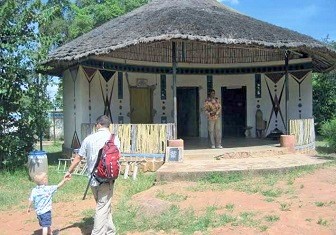
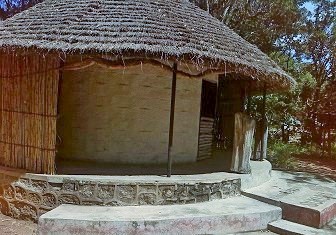
Sukuma Culture Experience at Kisesa Eco & Cultural Tourism
Kisesa Eco and Cultural Tourism is a designed place to show the Sukuma Cultural and where you can meet and greet the Sukuma tribe people. At Kisesa Eco and Cultural Tourism, you can experience the real African life, Outdoor adventures, Unique beaches rich of fishing culture, experience amazing natural attractions, social and cultural uniqueness of new tourism package Tanzania.
Service we offered
There are varieties of choices; well designed trips and tours for groups and individuals. Just few to mention are like:-
• Walking Safaris and cultural activities (3 – 4 hours)
• Meet and greet Sukuma and Zinza families (5 – 7 hours)
• Search the source of River Nile (researched), (3 days)
• Cycling trips within Sukuma villages (5 – 7 hours)
• Sunset cruise (on the privacy island) (5 – 7 hours)
• Boat trips to the unique Islands (Ukerewe or Ukara), (2 days)
• Medical, Flora and Fauna Tourism (3 – 4 hours)
• Historical and Heritage activities, (full day 5 – 7 hours)
Utamaduni Camp
On you way to Serengeti from Mwanza or to Mwanza from Serengeti a visit to Utamaduni camp is not to miss. Utamaduni campsite, located just 12km from the Ndabaka, the entry gate to the Serengeti. At the gate you will be treated to a recipe of introductions of great names such as Lake Victoria, formerly known to the Lake natives as inyanja, which means ‘mass of water’ and the Sukumaland, Bujora Museum and the Bismarck hanging stones, among others.
Major activities at the Utamaduni camp would include, fishing and, canoeing tours in locally assembled boats and dhows. A visit to a home of a traditional healer could be an intriguing experience. But don’t forget savouring the sensational Wasukuma dance sprees such as fire eaters dance, the igobogobo dance in which groups of smallholder farmers assemble and begin tilling the land in their maize fields by hand-hoes as they follow the rhythm of an igobogobo drumbeats, a huge traditional drum. It could be fascinating to watch rhymes , and if you are active enough, then take bait and get involved in the farming dance. There are also some other activities such as the snake dance, healing dance and ecotourism. There are also so many soothing or war songs to be sung at the Utamaduni Camp.
Sukuma people and their lives
A visit to rural areas of Sengerema, Shinyanga, Geita or any other rural area where Sukuma people are living, to get to experience and know their daily activities and ways of living.
Mara Cultural
Mara region is occupied by various tribes including the Wajaluo, Wajita, Waruri, Wazanaki, Wakurya, Wakabwa, Wakiroba, Wasimbiti, Wangoreme, Wakwaya, Waikoma, Wanata, Waisenye, Waikizu, Wasizaki, Wasukuma and Wataturu (Watatoga).
Ikizu and Zanaki Cultural Tourism
On the western side of Serengeti National Park, from Ikoma gate one will meet great people named Waikizu tribe. Nyamuswa cultural Tourism Program exposes visitors on the way of life of Waikizu people and beautiful landscape with hills, mountains and valleys filled with water where canoeing can perfectly bring you closer to aquatic creature. Get an experience of handcraft making using various indigenous trees. And off course an opportunity to learn about kinship leadership system.
The following are on offer:
• A welcome to Waikizu homestead
• A visit to King homestead/Royal tour
• A visit to Ikizu caves
• A visit to the Mara Art and Handcraft making group
• Wazanaki traditional dancing of your choice
• A visit to a rain maker
• Visit to traditional healer famous for treating carious diseases especially infertility
• Visit to a foot print of our ancestors found at the mid of a big rock
• Visit the ‘O’Mong’we worshiping tree and learn how locals used to conduct their worship
• Trekking up the Chamiriho hill, visit German soldiers hiding caves, graveyards and get a panoramic view of Lake Victoria, Serengeti plains and surrounding human settlement
• Canoeing in safaris in two of the dams found in the area
• Sport fishing in either of the two dams available
• Visit community development projects, local schools and health centers found in the area. See how people are struggling to overcome the big human enemies: Poverty, illiteracy and Disease
• Cotton farm tour: see how people practice cotton farming
• A stay with Wazanaki family to enjoy traditional food and their unique lifestyle
Ikoma Cultural Tourism
Ikoma Cultural Tourism is situated on the western side of Serengeti National Park 90 km from Ikoma gate. Ikoma cultural Tourism exposes visitors the way of life of Ikoma people.
The following are offered to our esteemed visitors;
• Visit to Waikoma bomas
• Visit to Ikoma cultural centre
• Traditional dance of the Ikoma tribe
• Stay with Waikoma family to enjoy traditional food and explore their life style
• Participate in traditional events and ceremonies
• Visit community development project, local schools and health centre’s found in the areas. See how people struggling to overcome the big human enemy disease.
• Farm tour whereby you will see people practicing different forms of agriculture
These are some of the cultural Tourism services offered in Mara, but while you are in Mara you will experience many cultures depending on the area you are!
Kuryas Culture
At western side of Serengeti National Park, 45 km from Ikoma gate, Serengeti cultural tourism exposes visitors to the way of life of the Kurya people. Great landscape with iconic kopjes which are habitat and breeding ground for various mammals species and other wildlife can be explored in different ways that makes you enjoy.
Service Offered
• Visit to wakurya bomas (kuryani culture)
• Biking tour
• Mugumu town tour
• Visit to Manchira marsh
• A visit to Serengeti cultural centre
• Camping at Serengeti cultural centre
• Traditional dancing of your choice among the 4 famous tribal dances around
• Visit traditional healer to learn how people have been treated from memorial times
• Visit community development projects. Local schools and health centers found in area. See how people are struggling to overcome the big human enemies; poverty, illiteracy and diseases
• Farm tour: see how people practice different forms of agriculture
• A stay with wakurya family to enjoy traditional food and unique lifestyle
• Volunteer program
Kurya’s Traditional Courts (Inchama)
Learn how justice is delivered by attending one of the proceedings at a traditional court of Wakurya, the Inchama. Inchama is an elders open air baraza. To date, these baraza are still in practice and they yield much influence to Wakurya communities. Each village will select one of its members to represent them in the Baraza proceedings. Currently the elders would meet once a week, specifically, on Wednesday to discuss issues presented before the baraza and also resolve them in presence of the two or more parties involved. There are lots for the visitors to see at the Inchama.
• Get to learn more about how Wakurya societies handle and solve conflicts.
• Meet Wakurya elders and learn the history and origin of the Wakurya tribe.
• Visit different areas in Tarime and know to get insight of lifestyle of the Wakurya.
Nyamuswa Village
Nyamuswa is located between Bunda and Mugumu and it has an interesting story or myth to tell. It is on the junction of the roads that connect Bunda, Butiama and Mugumu.
In Nyamuswa town there is a carpenters workshop in which batons are made. These batons are similar to thatMwalimu JK Nyerere would almost always carry or stack under his armpit. The carpenters still make these batons in different size and style and they are sold alongside other furniture. Another attraction is about 7 kilometres out of Nyamuswa, there are several things that can be seen and there are a lot of stories and historical attractions. It is best to walk around while visiting the different sites, because they are all in a short walking distance.
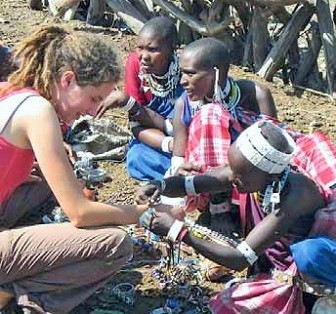
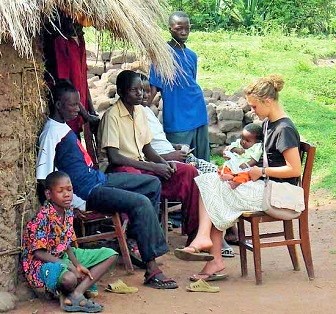
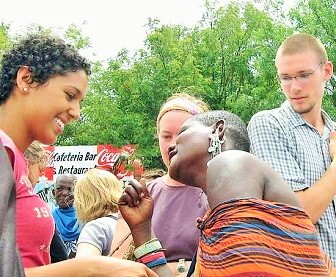
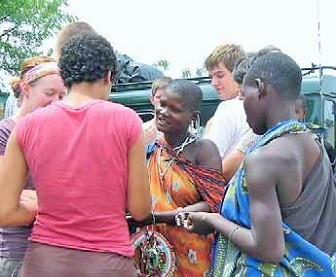
Tourists interact with locals.
Serengeti Arts Group
The Serengeti Arts Group is one of the few curio shops available in Mara Region. It is located in the middle of Mugumu town. They are engaged in making beads on fabrics and clothing. They also make necklaces in various styles to suit diversified tastes. Visitors can purchase some of these beads, necklaces, batik and baskets as souvenirs.
Serengeti Cultural Tourism Festival
There is Serengeti Cultural Tourism Enterprise which coordinates the annual event known as Serengeti Cultural Tourism Festival.It is a three days event and the tribes participating include the Wakuria, Wazanaki, Waikizu,Waikoma and Wajita.Some activities at the centre, include:
• Tour in and around the cultural centre.
• Enjoy traditional dances performed by local dancers.
• Undertake some bike tours in and around the centre
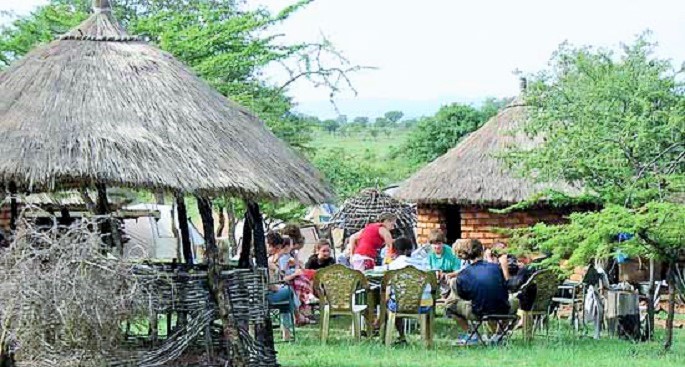
Haya Cultural Tourism - Kagera
Haya tribe is found at Kagera, you can have a tour to Kagera and get to know their culture, History and Visit the Kagera Museum and other interesting places. For five centuries Kagera Region had nine different Kingdoms and a highly hierarchical society. It
was during then that coffee was introduced as a cash crop and raw bananas a staple food. The ethnical Kings lived in elaborate palaces and were highly respected because they were thought to have direct link to God for power and the glory. The demise of the nine kingdoms, namely Kihanja, Karagwe, Kiziba, Misenye, Bugabo, Kyamtwara, Ihangiro, Bukara and Biharamulo came soon after Tanzania gained independence in 1961 because they had no historical roots.
Traditional dance
“Ngoma” is the major traditional dance. Traditional dances come in a variety of styles including Omutoro, Amayaga, Mulekule, Amakondele, and Akasimbo. There are traditional songs, which differ in area of origin and status, such as funeral ceremony songs, spiritual and wedding songs. There are a variety of music instruments and dancing attire too.
Story telling
Stories and legends of ancient times are commonly told at night when the family gathers for exchanging views. Stories are normally narrated by the elders. They have their meaning in strengthening norms and conducts of the young and the roles of gender. They are called “Engano” in Kihaya.
Traditional architecture / crafts
Traditional houses are called “Mushonge” these are round grass houses strengthened by large poles of tree (enyomyo). What is unique is that the construction begins with the roof rather than the ground foundation. People have gradually changed to muddy houses and iron sheet roofs. Presently most people construct brick houses and iron sheet or tile roofs. The Region has craftsmen dealing with basketry, pottery, canoe and boat building and various other forms of art and crafts. Western architecture (German and English) as well as Arab architecture (especially mosques) can be seen in many places. Traders and explorers of those origins introduced
them.
Drum Making Workshop
Visit a drum making workshop run by disabled people. See how the traditional Haya drum is being made and being played. The drum making workshop, BUDAP (Bukoba Disabled
Assistance Project) was started by Kiroyera Tours as one of their community based tourism projects. By visiting this workshop you support the disabled people of Bukoba
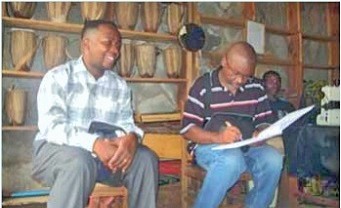
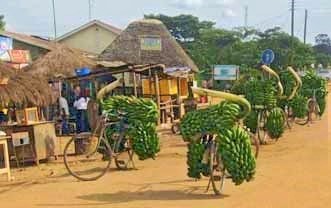
Learn How to Cook Traditional Haya Food
The indigenous Haya people of this area invite you to the centre of the ancient Kiziba kingdom at Gera. Here you can sample local foods, learn first hand how to cook Bahaya food, view tribal dancing and listen to the traditional music of this tribe. Each visitor would be required to a conservative fee for such tours.
Meet the King in his Palace
Did you ever meet a king? Here is your chance. Visit former King Peter Nyarubamba at Kanazi Palace. Learn about the history of former governance before independence and get a privileged view of a traditional Bahaya house and royal tools such as spears, drums and the King’s chair.
Kagera Museum
Kagera Museum is situated at Nyamukazi Area, near Bukoba Airport. It is a perfect place to learn Haya culture, history and heritage. Don’t miss the fabulous new addition to the profile of Bukoba! You can view local tools, heritage and most impressively a fine collection of professional wildlife photography.
Religious shrines and rock art
Historically there were large trees that were used as places of sacrifices and prayer to the ancestors (Ekigabiro). There were miniature huts and other forms of spiritual following.
Today, these are rare if any. With Christianity, Kagera Region became famous in producing the first African Roman Catholic Cardinal (the now Late Cardinal Laurian Rugambwa) and a world famous leader of the Lutheran Church (the Late Bishop Kibira). Of the Catholic Church there is Nyakijoga a shrine world famous for the miracle powers of the healing waters blessed in the name of the Virgin Mary the Mother of Jesus. Every year thousands of pilgrims from all over the world convene at this shrine which is indeed recognized as the Lourdes of Africa after the Lourdes of France. Close to Nyakijoga you come to Nyangoma ancient rocks paintings have
been discovered. There are hundreds of these paintings in caves overlooking a very attractive valley. There are located in Bukoba District.
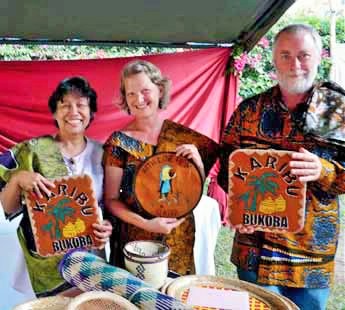
Historical Kamachumu Day Tour
Take a journey through the ancient history of this region and see real Bahaya life! Meet the reining chief in his residence at Kanazi, climb to the top of an escarpment and see breath taking views, visit a traditional grass built dwelling “the Mushonge house” plus visit religious sites and marvel at the Bugonzi waterfalls.
Chief Rumanyika Museum
It was at this site where the 19 century white explorers such as Henry Morton Stanley and John Speke stayed while in search of the source of the River Nile. The site is rarely maintained but it is ideal for picnics and historical/cultural tourism, research activities and camp sites.
Chiefdom House in Ngara
This was the official residence of Chief Baramba of Bugufi in Ngara. At the compound stands a one-storey building with 20 rooms in which the Chief, his family, and members of his inner circle lived. The old house is just alongside the main road to the neighbouring Burundi. It is suitable for cultural tourism, campsites and picnics.
Some few basic Kihaya words you can learn while in Kagera
Welcome - nyegera
Goodbye - mpao
Come in - ija
I am hungry - nyin’enjara
Let’s go - tugende
Let’s leave - turugeo
Good afternoon - wasiboota
Good morning - waimukayo
Show me the way - nyoleka omuanda
Sorry - samahani
Kerewe Culture at Ukerewe
Take a boat to Ukerewe and Ukara island, where you will enjoy the local people of Ukerewe and Ukara and their culture and ways of living. The local people are extremely friendly and visit to see the tremendous scenery on the island.
Learn Swahili Greetings
Kiswahili is the main and the national language of Tanzania, and the most known local language in East Africa. This is the main language of communication in urban areas, most of the Tanzanian know Kiswahili and few English.
Greetings are important in Tanzania, if you greet someone older than you, you should always use a 'shikamo' which means 'I am under your feet'. It is a way of showing your respect and it is always a good idea to say it to any one older or important. The correct answer should be 'marahaba', so practise this also, as children might say shikamo to you, and it would be considered rude not to give back the right reply.
Other greetings are 'habari' or 'salama', which are all replied with 'nzuri'. Sometimes you will hear younger people saying 'mambo' or 'jambo' to which you can answer 'nzuri' or 'salama' but also 'poa', 'safi sana/kabisa' or 'freshi'. But never say that to an older person.
- Serengeti Park
- Northern Circuit Tour
- Saanane Island Park
- Rubondo Island Park
- Beaches
- Rocks Tourism
- Igogo Caves
- City Tour
- Bujora Museum
- Gunzert House
- Markets & Shopping
- Adventure Tourism
- Kageye Historical site
- Volunteer Tourism
- Sporting Tourism
- Investment Opportunities
- Butiama Museum
- Ukerewe Tourism
- Livestock Tourism
- Religion Tourism
- Slums Tourism
- Historical Sites
- Events Tourism
- Farming
- Transportation Adventure
- Natural Remedies
- Education Tourism
- Eating Tourism
- African Lifestyle
- Sengerema
- Misungwi G.R.
- Kagera Tourism
- Kagera Culture
- Mara Culture
- Mara Touring
- Geita Tourism
- Rwanda and Burundi
- Visit Uganda






Follow us